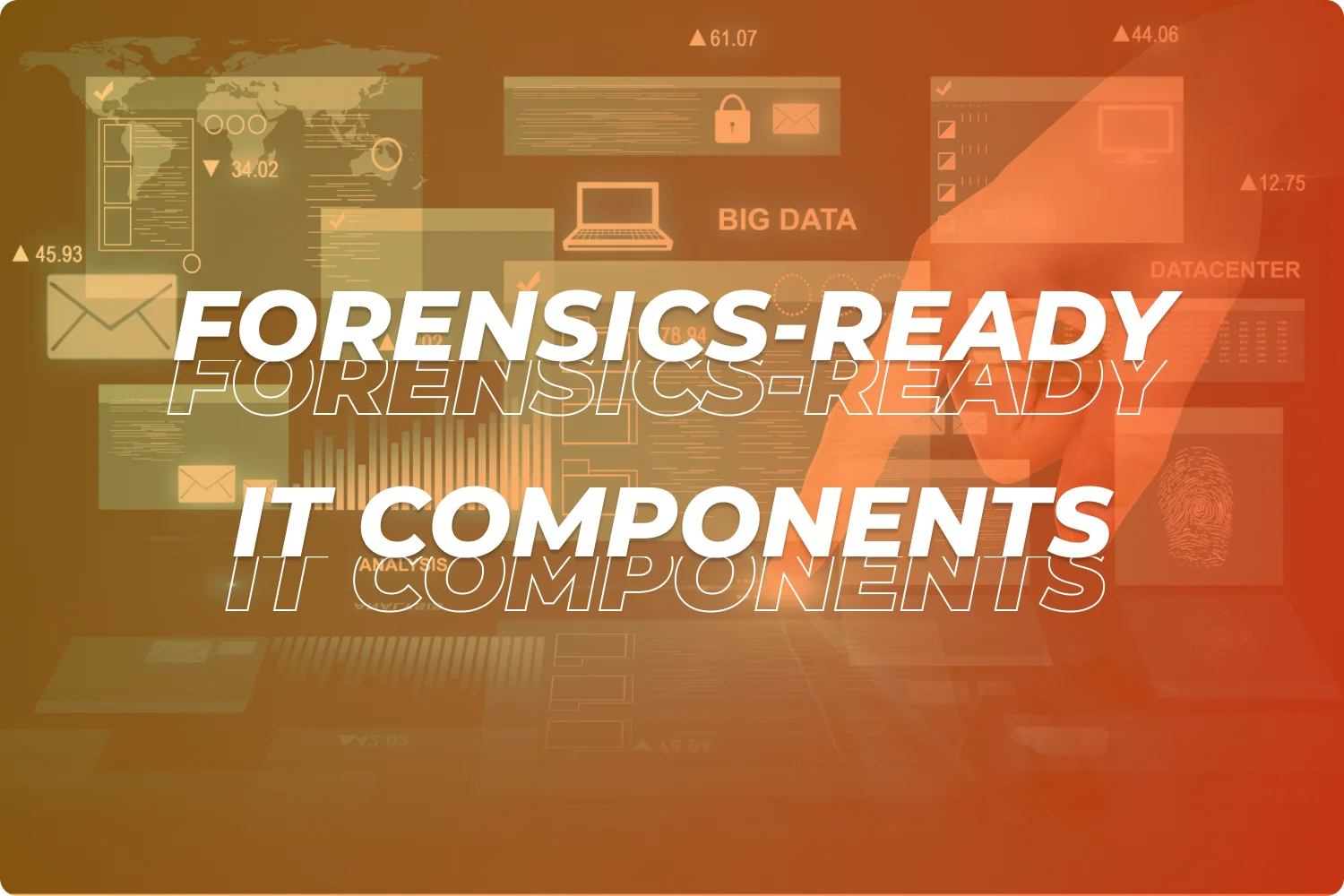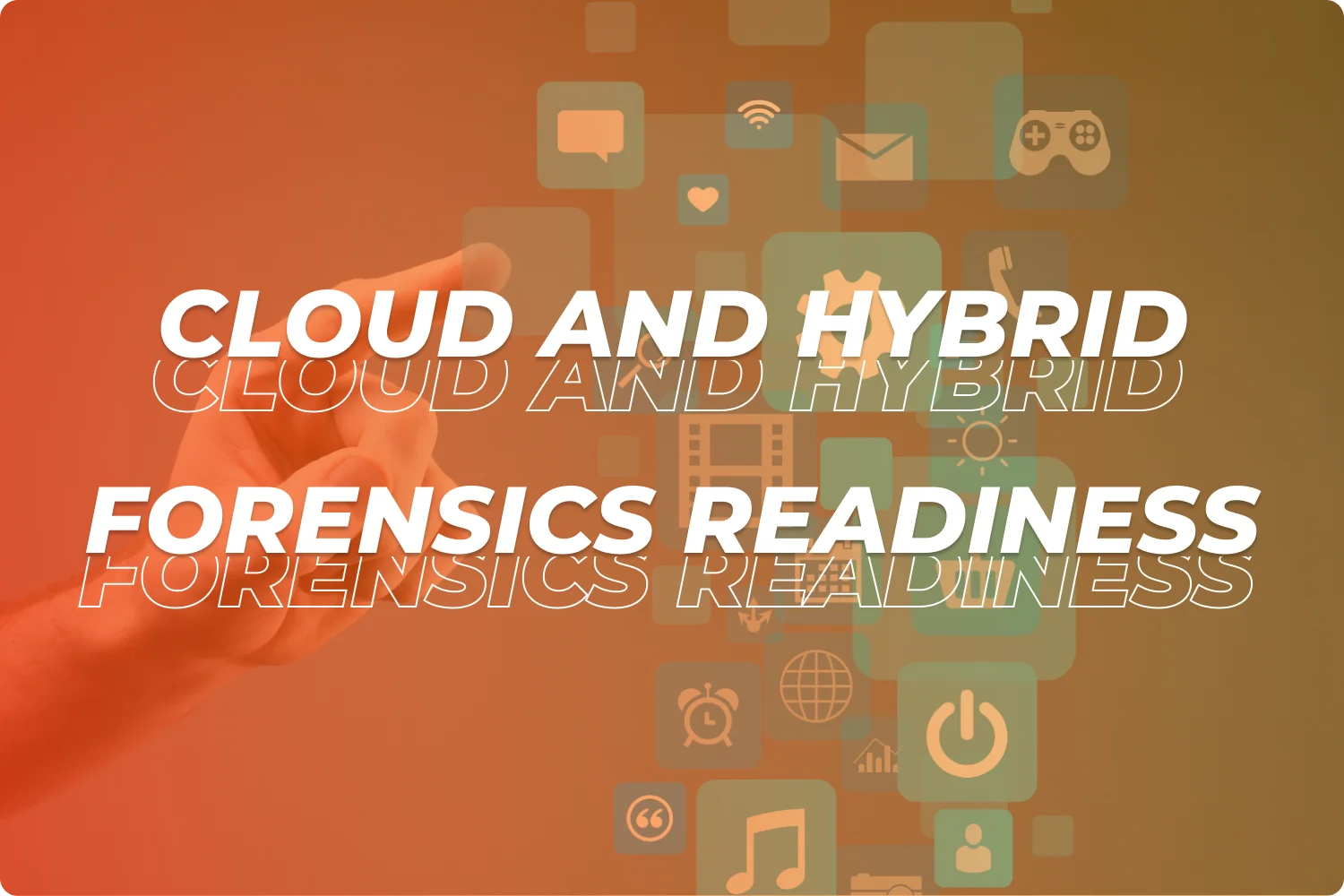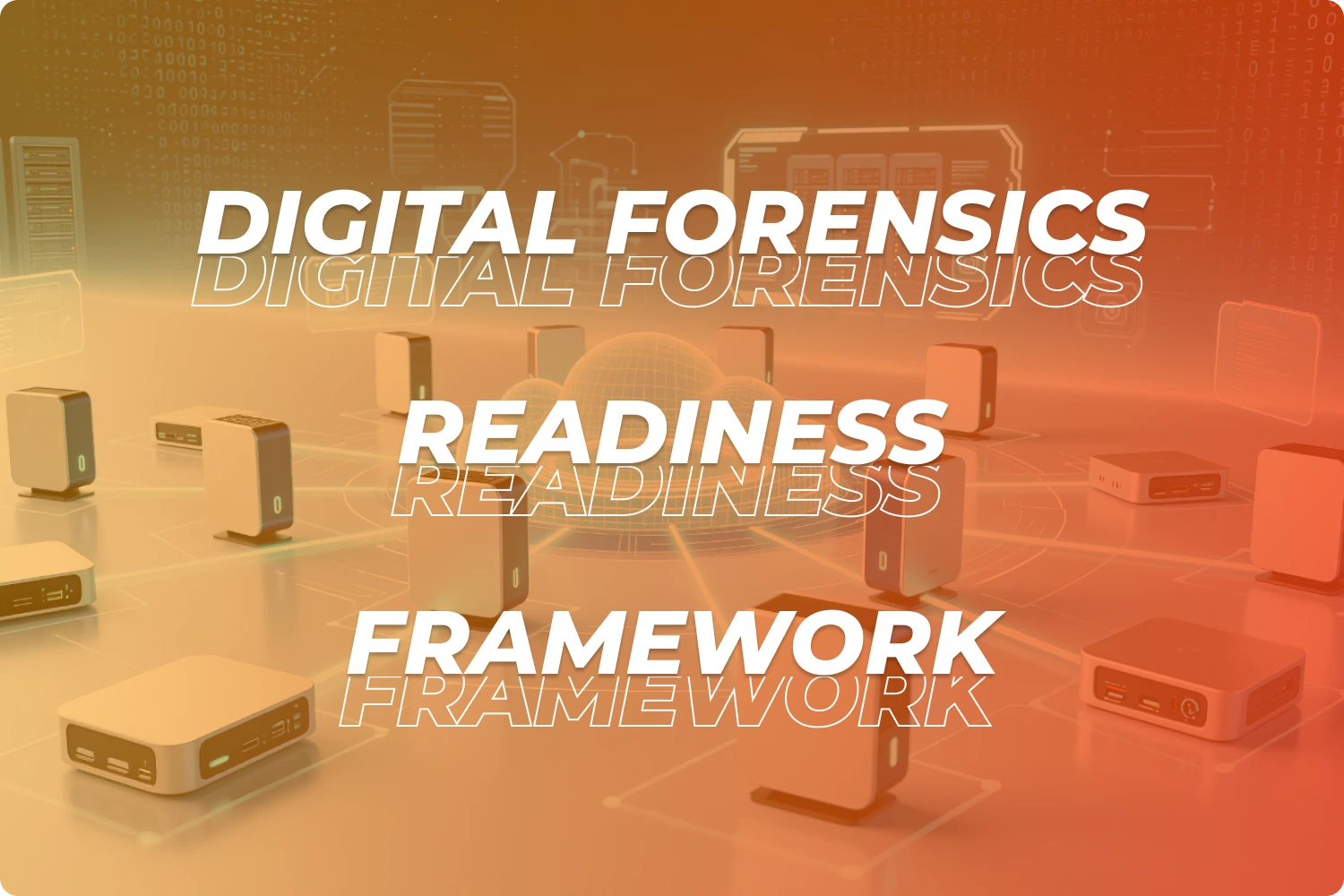Being prepared for digital forensics is becoming a daily priority for organizations operating in the Asia Pacific region. Digital forensics readiness means having the structure, technology, and processes in place so that digital evidence can be quickly and legally collected when needed. Instead of reacting to an incident after the fact, there’s real value in building systems that help you respond quickly to legal discovery or internal investigations while remaining compliant with local regulations.
The business case is compelling. Responding to legal or regulatory requests can be costly and disruptive if you're not ready. The costs don't stop at legal bills; there's downtime, lost data, and reputation damage. With growing cyberattacks, tighter privacy regulations, and cross-border cloud complexity in Asia Pacific, the pressure to get digital forensics right is increasing. Companies face real risks of fines and shutdowns if systems can't preserve and produce evidence on time.
Preparing IT infrastructure for digital discovery ensures your data is clean, your audits stand up in court, and your business reputation survives legal scrutiny. Organizations that invest in forensics readiness spend less time firefighting during incidents and more time on strategic initiatives that drive growth.
Understanding Digital Forensics Readiness
Digital forensics readiness is the process of designing your IT environment so digital evidence can be identified, collected, preserved, and analyzed efficiently, with minimal disruption. This isn't just a technical fix after a breach; it's a long-term business strategy supporting everything from legal discovery (eDiscovery) to HR inquiries and government audits.
Many organizations think of forensics work as something that happens after a major security event. That's only half the story. Being forensics-ready means putting controls in place to ensure that when a court, regulator, or auditor asks for evidence, you can respond quickly and prove the records are reliable. This means logs are consolidated, stored securely, and protected from tampering or accidental deletion, making them admissible in legal settings.
This preparation is especially important in finance, healthcare, and technology, where regulations dictate strict rules on how long and how securely electronic evidence must be kept. When auditors request specific records, they expect them within days, not weeks. Organizations without proper readiness often scramble to reconstruct events from incomplete data sources, which is expensive and embarrassing.
Global standards add clarity here. ISO/IEC 27037 explains requirements around identification, collection, acquisition, and preservation of digital evidence. NIST SP 800-86 offers guidance for integrating forensic techniques into incident response. Financial companies in Hong Kong and Singapore follow these guidelines to build audit trails and document changes to customer data or trading systems, reducing liability risks during investigations.
The readiness mindset matters during everything from sudden data breaches to ongoing compliance reviews. By treating evidence management as a business expectation, not just a crisis measure, organizations lower the risks of failing regulatory checks. Digital forensics readiness also creates operational benefits beyond compliance. When systems are designed with evidence preservation in mind, troubleshooting becomes faster, root cause analysis becomes more accurate, and performance monitoring improves.
Demonstrating the Business Case for Forensics Readiness
Investing in digital forensics readiness offers measurable benefits. It significantly reduces time and cost spent responding to security events, legal requests, or audits. When an organization has robust audit logs, clear evidence trails, and tested processes, it spends less time on manual data retrieval or arguing over record credibility.
Imagine a finance company in Singapore whose server logs aren't synchronized and emails aren't archived per policy. When a legal dispute arises or regulators investigate a suspicious transaction, gathering evidence takes days. Deadlines get missed and costs mount. Legal counsel bills premium rates while IT teams piece together fragmented records from multiple systems.
With strong forensics readiness, relevant records are available and maintained defensibly. Organizations respond to auditors within hours instead of days, often avoiding negative publicity or penalties. Teams that are ready can show clients, partners, and regulators they have a handle on their information, which keeps business running smoothly.
Common impacts of poor readiness include:
Irretrievable or corrupted data that weakens court cases or compliance audits and can lead to adverse legal judgments.
Tampering or accidental overwrites that raise suspicions of wrongdoing and create additional legal exposure, even when no intentional misconduct occurred.
Hefty fines from regulators for missed retention requirements or failing to produce timely evidence. In some jurisdictions, penalties can reach millions of dollars.
Delays in restoring systems after incidents because of incomplete audit trails or backup failures, extending downtime, and multiplying losses.
Reputational damage that manifests as lost customers, difficulty attracting talent, or diminished partner confidence.
The financial argument strengthens when considering opportunity costs. Organizations maintaining forensics readiness can pursue business opportunities requiring demonstrable security and compliance maturity. Winning contracts with government agencies or multinational corporations often depends on passing rigorous vendor security assessments. Beyond direct financial impacts, forensics readiness supports strategic decision-making. When leadership has confidence in data integrity and completeness, they make faster, more informed decisions about mergers, market expansions, or technology investments.
Core Components of a Forensics-Ready IT Infrastructure
Setting up your infrastructure for digital forensics readiness means combining best practices, technology, and well-defined policies.
Implementing Centralized, Write-Once Logging
Logs form the foundation of digital evidence. Centralized logging systems collect logs from all key servers, applications, network devices, and cloud resources into a secure, single source of truth. This consolidation is critical because forensic investigations require correlating events across multiple systems to reconstruct what happened and when.
Logs must be protected from unauthorized changes. Tools providing write-once storage or cryptographic signing help preserve evidence integrity, proving logs haven't been altered. This becomes especially important when evidence must withstand legal scrutiny. Limiting direct access to log storage and using monitored APIs defends against tampering. Only designated security or compliance personnel should view logs, with absolutely no deletion rights.
Log retention periods deserve careful consideration. Many organizations adopt a tiered approach: keeping recent logs (30-90 days) in hot storage for immediate access, archiving older logs in cold storage, and implementing automated deletion based on retention policies balancing legal requirements with practical considerations. Technical implementation should include log normalization and enrichment, making investigations faster and more accurate.
Establishing Clear Data Classification and Retention Policies
Clarity on what data must be stored, where, and for how long forms the foundation of good forensics management. Classification helps separate high-sensitivity items like payment records, emails, or healthcare data from less critical files. This isn't just about applying labels; it's understanding the business and legal value of different data types.
Proper retention schedules ensure evidence is available for audits or eDiscovery but is lawfully deleted when no longer needed, reducing storage bloat and legal risk. Different data types often have different retention requirements based on regulations, contractual obligations, and business needs. It's vital to regularly update these schedules to reflect shifts in regulation and business operations.
Access Controls and Identity Management
Restricting access is key to maintaining evidence integrity. Strong identity management systems and role-based access controls (RBAC) ensure staff only see or change data if their job requires it, and all access is logged. Multi-factor authentication and regular access reviews help prevent both external attacks and insider snooping, making it easier to trace activity when incidents happen.
For forensics purposes, access logs should capture sufficient detail: who accessed what data, when, from where, and what actions they performed. This level of detail supports both security investigations and legal discovery requests, where proving or disproving that someone accessed specific information can be crucial.
Secure Backup and Archival for Legal Holds
Backups play a huge role in forensics. Regular, automated backups ensure data recovery during incidents or if main records are compromised. For legal discovery, processes for placing specific data under legal hold must be established so it won't be deleted or overwritten until all investigations, audits, or lawsuits are closed.
Legal hold capabilities deserve special attention. When litigation becomes reasonably anticipated, organizations have a legal obligation to preserve relevant evidence. Automated systems that can instantly suspend deletions across all relevant systems are far more reliable than manual processes. It's important to clearly document how backup integrity is maintained and to test the restore process regularly. Backup monitoring should track success rates, verify data integrity through checksums, and alert on anomalies.
Encryption, Timestamping, and Documentation
Data needs encryption in transit and at rest, especially for sensitive evidence. However, encryption must be implemented thoughtfully for forensics purposes. Evidence that's encrypted but whose keys are lost becomes useless. Key management systems should ensure authorized personnel can decrypt evidence when legally required, while preventing unauthorized access.
Timestamps, sourced from synchronized time servers, ensure every log entry and file change can be precisely tracked. Time synchronization across all systems is critical. Using Network Time Protocol (NTP) with reliable time sources and monitoring for clock drift helps maintain temporal accuracy.
Thorough documentation such as chain of custody forms and evidence collection checklists is as important as technical measures. Documentation should cover every step: who collected the evidence, when, using what methods, how it was transferred, where it's stored, and who has accessed it. Courts expect this level of rigor.
Forensics Readiness for Cloud and Hybrid Environments
The rise of cloud computing across APAC brings its own forensics challenges. Evidence can be spread across data centers worldwide, with storage managed through third parties. Organizations must establish clear policies for collecting, exporting, and securing cloud-based evidence.
Review cloud vendor contracts for details about audit log retention, access to metadata, and support during investigations. Not all cloud providers offer the same forensic support. Understanding these capabilities before emergencies occur allows informed decisions about which cloud services to use for sensitive workloads.
Good forensics readiness in the cloud follows the same principles: data integrity, reliable logs, strong access controls, and clear documentation. Cloud-native tools for automated logging, immutable storage, and legal hold features help bridge the gap. Hybrid environments mixing on-premises and cloud resources require even more careful planning to avoid missing evidence during legal reviews.
Legal and Compliance Drivers in Asia Pacific
Staying compliant with evidence retention and privacy regulations is a top priority for organizations working across Asia Pacific. Each jurisdiction handles digital evidence management differently, creating a complex landscape requiring careful navigation.
Singapore's PDPA (Personal Data Protection Act) establishes comprehensive requirements for how organizations collect, use, and manage personal data. The Act requires appropriate security arrangements to protect personal data, directly impacting how digital evidence containing personal information must be secured. Organizations must cease retaining documents containing personal data when purposes for collection are no longer served, but this must be balanced against forensics needs.
Hong Kong's PDPO (Personal Data Privacy Ordinance) sets out Data Protection Principles governing collection, accuracy, retention, use, security, and access of personal data. The security principle requires personal data be protected by reasonable safeguards. The retention principle creates tension with forensics needs, where evidence may need retention beyond normal business purposes for legal or investigative reasons.
China's Cybersecurity Law (CSL) and Personal Information Protection Law (PIPL) establish some of the region's most stringent requirements for data handling and cross-border transfer. The CSL requires network operators to implement technical measures for monitoring, log retention, and data security incident handling. PIPL imposes strict rules on cross-border data transfers, generally requiring security assessments before personal information can be transferred outside China.
One growing challenge across Asia Pacific is the conflict between privacy protection and the need to preserve potential evidence. Privacy laws often say personal information must be deleted when no longer needed, but legal discovery might require records held longer. Managing this balance takes unified policies that can flag data under legal hold and ensure deletion is paused when evidence is needed.
Another critical issue is cross-border data transfer. Cloud adoption means data may be stored in other countries. Certain regulations limit which countries you can move data to, or require strict agreements and safeguards. Good digital forensics frameworks help prove to regulators that your company can track and protect evidence wherever it resides, supporting APAC data compliance even during complex international legal disputes.
When companies can quickly show auditors or courts that their systems maintain reliable evidence while upholding privacy and cross-border requirements, it builds trust with customers and regulators. This transparency serves as a competitive advantage in attracting new clients, partners, or investors.
Building a Digital Forensics Readiness Framework
Developing a digital forensics readiness framework can feel overwhelming, but breaking the process into clear steps makes it manageable.
1. Define Scope and Objectives
Begin by clarifying what digital evidence means for the organization. This usually includes user activity logs, emails, financial records, server logs, and cloud data. Work with legal and compliance teams to set clear goals: Is the organization preparing for legal disputes, industry audits, or regulatory inquiries? Clear scope helps tailor policies and technology without overcomplicating things.
2. Map Out Data Flows and Critical Systems
Diagram where key data is created, processed, and stored, including both physical and cloud systems. This mapping helps find gaps where evidence might be missed or become unreliable, such as unlogged endpoints or unsynchronized timestamps. Reviewing these maps regularly ensures new technologies or operational shifts are included in readiness planning.
3. Establish Evidence Handling and Logging Practices
Set up practices for robust logging and secure evidence storage. Specify what gets logged, how often logs are backed up, and how tamper-proofing is implemented. Set retention schedules meeting regulatory and business needs. Different log types may have different retention requirements based on their potential evidentiary value and applicable regulations.
4. Develop Legal Hold and Communication Procedures
Work out practical steps for placing data on legal hold: pausing deletions, ensuring backups are kept safe, and documenting every action. The legal hold process should be formalized with clear triggers, designated responsible parties, and documented procedures for notification and implementation. Clear internal communication policies ensure everyone knows when a legal hold is in place and what steps to take.
5. Train Staff and Assign Ownership
Everyone from IT admins to compliance staff needs to know their responsibilities, evidence handling basics, and who to contact with questions. Training should be tailored to different roles. Regular refreshers and simulated drills help build confidence. Consider creating a forensics readiness team with representatives from IT, legal, compliance, HR, and relevant business units.
Digital forensics readiness succeeds when IT, legal, and compliance teams work together from the start. Regular meetings, shared planning documents, and joint readiness testing help break down silos. Sometimes bringing in outside consultants or specialists gives a fresh perspective and reassures stakeholders the framework is up to modern standards.
Measuring Forensics Readiness: Key Performance Indicators
To maintain and improve your digital forensics readiness program, track specific metrics that demonstrate preparedness and identify gaps before they become problems. These KPIs provide leadership with clear visibility into readiness maturity and help justify continued investment.
Time to legal hold issuance and propagation measures how quickly your organization can identify relevant data and suspend deletion processes when litigation or investigations arise. Best-in-class organizations achieve this within hours, not days.
Percentage of systems with centralized, time-stamped logs enabled shows coverage across your infrastructure. Aim for 95% or higher on critical systems, with clear remediation plans for any gaps.
Evidence retrieval SLA hit rate tracks whether your team can produce requested evidence within defined timeframes, typically 48 to 72 hours for standard requests. This metric directly correlates with regulatory compliance and legal defensibility.
Successful quarterly restore tests for scoped evidence sets verifies that backups work as expected and evidence can be recovered when needed. Testing should cover various scenarios including point-in-time restores and legal hold situations.
Percentage of privileged accounts with MFA and least-privilege verified ensures that access to forensic evidence and logging systems is properly secured. Regular access reviews should maintain this metric above 98%.
Policy audit pass rate across cross-border workloads measures consistency of evidence handling practices across different jurisdictions and cloud providers, especially critical for APAC organizations with distributed operations.
Tracking these KPIs monthly or quarterly helps demonstrate program maturity to auditors, boards, and regulators while providing actionable insights for continuous improvement.
Getting Started: A 90-Day Rollout Plan
For organizations beginning their forensics readiness journey, a phased approach makes implementation manageable while delivering incremental value. This 90-day plan provides a realistic roadmap for establishing core capabilities.
Days 1 to 30: Foundation and Assessment
Scope evidence types and critical systems requiring enhanced logging. Work with legal and compliance teams to identify crown-jewel applications where evidence collection is most critical. Enable write-once logging on these priority systems first. Align Network Time Protocol (NTP) across infrastructure to ensure accurate timestamps. Draft standard operating procedures for legal hold implementation, including clear roles and communication protocols.
Days 31 to 60: Technical Implementation
Implement role-based access controls (RBAC) and multi-factor authentication on log storage systems to prevent tampering. Complete data classification exercises and establish tiered retention schedules matching regulatory and business requirements. Pilot backup integrity checks and practice evidence restoration from backup systems. Document lessons learned and refine procedures based on pilot results.
Days 61 to 90: Extension and Validation
Extend forensics readiness controls to cloud-based services and hybrid environments. Conduct thorough contract reviews with cloud providers to understand logging capabilities, evidence export procedures, and legal hold support. Run a mock legal discovery exercise involving IT, legal, and compliance teams to test end-to-end processes. Identify and remediate gaps discovered during the exercise. Publish a monitoring dashboard displaying the KPIs outlined above to track ongoing readiness and identify improvement areas.
This phased approach allows teams to build skills progressively, demonstrate quick wins to leadership, and refine processes before expanding to the entire IT estate. Organizations can adjust timelines based on size, complexity, and available resources, but the sequential logic remains sound.
Common Pitfalls and How to Fix Them
Several common challenges crop up when organizations try to improve forensics readiness:
Keeping too much irrelevant data clutters search results during investigations and raises privacy risks. Regularly review which data you actually need for business and legal reasons. Implement data minimization principles.
Having fragmented policies with different departments following different rules creates gaps and inconsistencies. Update policies so they match across regions or business lines. Centralized policy management with clear governance ensures consistency.
Setting up technical controls like logging but never testing recovery or reviewing logs until a crisis strikes is surprisingly common. Use readiness drills to test both people and technology. These exercises reveal whether your systems work as designed.
Failing to involve both IT and legal so legal holds or evidence requests fall through the cracks can lead to spoliation of evidence. Ensure legal teams have direct contact with IT. Establish clear escalation paths.
Periodic audits of evidence handling practices help double-check that systems work as expected. These audits should examine technical controls, policy compliance, training effectiveness, and documentation quality.
Future Trends in Digital Forensics Readiness
Several technology and legal trends are pushing digital forensics readiness further up the priority list for APAC organizations.
AI-driven tools now help automatically connect the dots in logs and spot suspicious patterns across huge data volumes, shortening incident response and improving evidence relevance. Machine learning algorithms can identify anomalies that would be impossible for human analysts to detect. However, the black-box nature of some systems can make it difficult to explain to courts exactly how evidence was identified.
Log management and analysis is becoming more automated, with cloud-native solutions making it easier to store, search, and protect evidence across complex environments. Modern security information and event management (SIEM) systems can ingest logs from virtually any source and provide unified search capabilities. These platforms increasingly incorporate forensics-specific features like evidence tagging and chain of custody tracking.
Cloud-native digital forensics tools allow faster, more reliable data extraction and preservation, even when systems are spread over many jurisdictions. These tools can snapshot entire cloud environments and preserve evidence without disrupting services.
Governments are issuing clearer rules for data retention, privacy, and eDiscovery, meaning readiness is now an expectation, not a luxury. Many regulators view forensics-friendly practices as a baseline for good IT compliance in Asia. Organizations should monitor regulatory developments across their operating jurisdictions and adjust frameworks accordingly.
Adopting these technologies, combined with robust readiness frameworks, will help organizations across Asia Pacific keep up with new threats, regulatory changes, and evolving expectations from courts and clients. Being prepared now protects against disruption and keeps businesses ahead as rules and risks change.
Turning Compliance into Competitive Advantage
Digital forensics readiness isn't just an IT task or a response to regulations; it's a way to protect your business, reputation, and customer trust. By building IT systems always ready for legal discovery, organizations reduce security risk and show clients and regulators they take governance and data protection seriously.
The investment in forensics readiness pays dividends across multiple dimensions. Operationally, it enables faster incident response and more accurate troubleshooting. From a compliance perspective, it simplifies audits and reduces regulatory risk. Strategically, it opens doors to business opportunities requiring demonstrated security maturity and builds stakeholder confidence supporting growth.
Organizations that view forensics readiness as merely a compliance checkbox miss the broader strategic value. Those that embrace it as a business enabler find themselves better positioned to win contracts, attract investors, navigate disputes, and maintain operations during crises. In increasingly competitive markets, this readiness becomes a differentiator setting industry leaders apart.
The reality is that digital threats and regulatory requirements will continue evolving. Forensics readiness isn't a project with a fixed endpoint; it's an ongoing program requiring regular attention, periodic updates, and continuous improvement. Organizations that recognize this and build forensics considerations into standard IT operations find that maintaining readiness becomes progressively easier and more valuable over time.
FunctionEight helps organizations across Asia strengthen IT governance and digital forensics readiness. Contact us to assess your systems before an incident exposes the gaps. Taking proactive steps today means smoother responses tomorrow and a stronger foundation for future growth.










